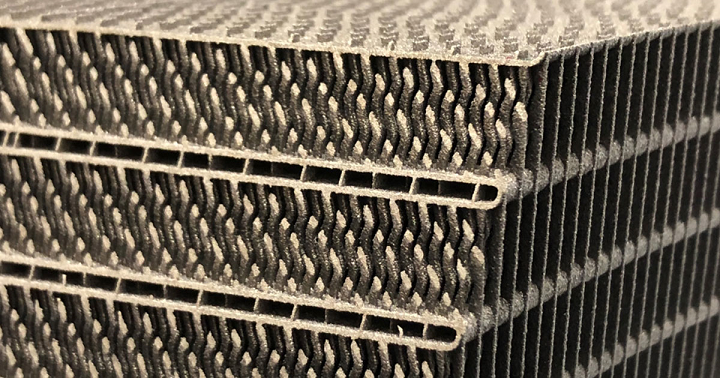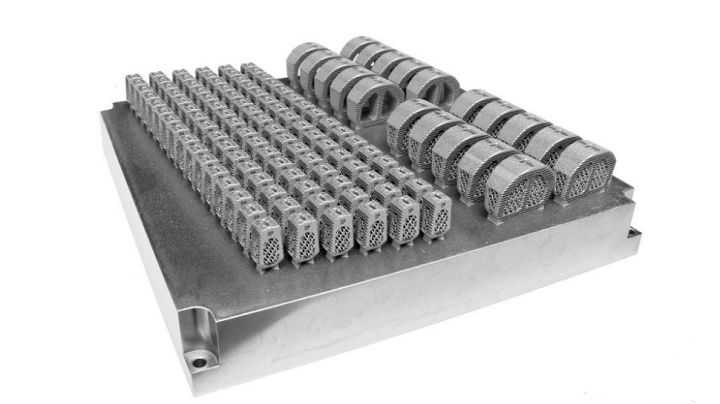In today’s 3D Printing News Briefs, we have plenty of additive manufacturing facility news from IperionX, Boeing, and GKN Aerospace. Moving on, GA-ASI continues its AM work with Conflux, and Amnovis is improving its 3D printed titanium implant workflow.
IperionX to Build 100% Recycled Titanium Demonstration Facility
IperionX, which develops US-based sustainable critical mineral and material supply chains, announced that the Southern Virginia Technology Park in Halifax County, Virginia, will be the home of the country’s first commercial-scale 100% recycled, low carbon titanium metal powder manufacturing operation, called the Titanium Demonstration Facility. After touring more than 250 sites in over 30 states and evaluating them for cost, access to infrastructure, possible financial incentives, site readiness, and expansion capability, the company selected a ready-made building on a 50,000 square foot site in the technology park, subject to completion of binding documentation. In addition to an incentive package from state, local, and county authorities, the site has access to 100% renewable powder, a large talent pool, major highways, and high-quality infrastructure, and will give IperionX a great location to scale up its titanium metal production. Phase 1 of the Titanium Demonstration Facility is expected to have an initial production capacity of 125 tonnes per annum (tpa) of titanium metal powder.
“We are thrilled to welcome IperionX to the Commonwealth. The new Halifax County operation will represent the first titanium metal powder facility in the U.S. using 100% recycled titanium scrap as feedstock, putting Virginia on the map for providing a critical material that is essential for our advanced industries. We look forward to supporting this forward-thinking company that will develop a new supply chain of titanium right here in the Commonwealth while creating high-quality jobs,” said the Governor of Virginia, Glenn Youngkin.
Boeing Inaugurates AM Facility in Washington
Boeing Additive Manufacturing (BAM), the additive manufacturing arm of top aerospace company Boeing, has officially inaugurated its Additive Manufacturing Center of Excellence (CoAME) facility in Auburn, Washington, which will use AM to design and manufacture parts and tools for commercial airplanes, spacecraft, satellites, and helicopters. The new fabrication center actually opened in January of 2020, but as with so many things that fateful year, the opening ceremony had to be postponed due to the COVID-19 pandemic. So the recent inauguration is the first time Boeing has actually been able to celebrate the CoAME. 3D printing gives Boeing a competitive advantage, as the technology can help speed up the design and manufacturing process, and also reduce the weight and cost of aircraft tools and components.
“Additive manufacturing allows us to fundamentally explore new ways to build our products. We can create parts that are practically or traditionally impossible,” said Dr. Melissa Orme, Vice President, Boeing Additive Manufacturing.
“Additive manufacturing is also greener and more sustainable than other methods because the process uses less energy and resources and creates fewer emissions, while the waste generated as a by-product of the process can be more easily recycled and reused. So, additive manufacturing really aligns with our company’s commitment to reduce our global impact or carbon footprint.”
GKN Aerospace Celebrates Grand Opening of Malaysian Facility

The new facility’s research is centred around the use of Additive Manufacturing in engine parts repair (Courtesy GKN Aerospace)
Another company celebrating a belated grand opening due to COVID is GKN Aerospace, which recently joined with Malaysian officials to officially inaugurate its new $35 million facility for 3D printed aerospace engine parts repair in Johor. This is the company’s 7th facility in Asia, and by the time all are up and running, about 15% of its employees are expected to be based in the continent. The Asian expansion is an important part of GKN Aerospace’s long-term growth strategy and global operating model, and Johor has favorable conditions in labor, business development, infrastructure, and education and training. This new site will service engine low-pressure compressor (LPC) components for CFM56-5B, CFM56-7 and V2500 platforms.
“We are really proud to finally open this state of the art facility and to be able to share this celebration with our customers, employees and stakeholders. We have strongly invested in the site and we injected the latest automated manufacturing technology. It is a true demonstration of our commitment to support our customers in the Asian Pacific Region and this has already led to exciting growth opportunities. We thank the Government of Malaysia for the excellent collaboration and for their vital and valuable support in facilitating our decision to locate in their country,” said Joakim Andersson, President Engines Systems.
GA-ASI Continues AM Collaboration with Conflux Technology
General Atomics Aeronautical Systems Inc. (GA-ASI), an affiliate of General Atomics, designs and manufactures unmanned aircraft, and is continuing work with its longtime collaborator Conflux Technology, a thermal management system solution supplier, to design and manufacture a new Fuel Oil Heat Exchanger (FOHE) for the MQ-9B SkyGuardian and SeaGuardian Remotely Piloted Aircraft (RPA). The partners have worked on four different 3D printing projects together since 2018, and are now focusing on optimizing and improving the performance of GA-ASI’s current units by minimizing the differential pressure across the FOHE, and maximize its overall heat extraction capacity. In addition, GA-ASI is developing a heat exchanger design that can be 3D printed, post-processed, and bench tested, and Conflux will be producing a fully functional prototype unit so GA-ASI can test it.
“Our mission is transforming heat exchanger performance,” explained Abe Masoud, Business Development Manager – North America, GA-ASI. “For our project with GA-ASI this means drop-in replacements that remove thermal load and maintaining a compact profile, while also increasing performance to meet higher system demand. When you are leading the charge on advanced technology, you need a world class team and agility to do it right. This is where Conflux comes in.”
Amnovis 3D Printing More Cost-Effective Titanium Spinal Cages
Finally, Belgian manufacturing and engineering company Amnovis has improved its AM contract manufacturing workflow for titanium spinal cage implants to make them more cost-effective and increase productivity. The company, which was founded by AM pioneers who were among the first use laser powder bed fusion (LPBF) technology to 3D print titanium medical implants, decided a change was needed to further strengthen its position in the expanding medical market. This allows Amnovis to print spinal cages at lower cost and decreased lead times, as well as expand its potential for both standard and patient-specific medical devices.
“For us, innovation benefits from material and process enhancements as well as the ability to increase AM productivity. By scaling our manufacturing capabilities for quality-critical applications, such as medical devices, we ensure faster delivery at lower cost, while maintaining our quality standards,” said Ruben Wauthle, Amnovis CEO and Co-Founder.
“The parts manufactured using our improved workflow meet the mechanical and chemical requirements of the ASTM standards and the entire process is validated. When printing high-end products for quality-critical medical applications, we obtain a
significantly higher productivity while maintaining superb quality and repeatability. The process improvements allow us to boost productivity and realize an exceptional total cost of ownership.”
Subscribe to Our Email Newsletter
Stay up-to-date on all the latest news from the 3D printing industry and receive information and offers from third party vendors.
You May Also Like
Precision at the Microscale: UK Researchers Advance Medical Devices with BMF’s 3D Printing Tech
University of Nottingham researchers are using Boston Micro Fabrication‘s (BMF) 3D printing technology to develop medical devices that improve compatibility with human tissue. Funded by a UK grant, this project...
3D Printing Webinar and Event Roundup: April 21, 2024
It’s another busy week of webinars and events, starting with Hannover Messe in Germany and continuing with Metalcasting Congress, Chinaplas, TechBlick’s Innovation Festival, and more. Stratasys continues its advanced training...
3D Printing Webinar and Event Roundup: March 17, 2024
It’s another busy week of webinars and events, including SALMED 2024 and AM Forum in Berlin. Stratasys continues its in-person training and is offering two webinars, ASTM is holding a...
3D Printed Micro Antenna is 15% Smaller and 6X Lighter
Horizon Microtechnologies has achieved success in creating a high-frequency D-Band horn antenna through micro 3D printing. However, this achievement did not rely solely on 3D printing; it involved a combination...

































